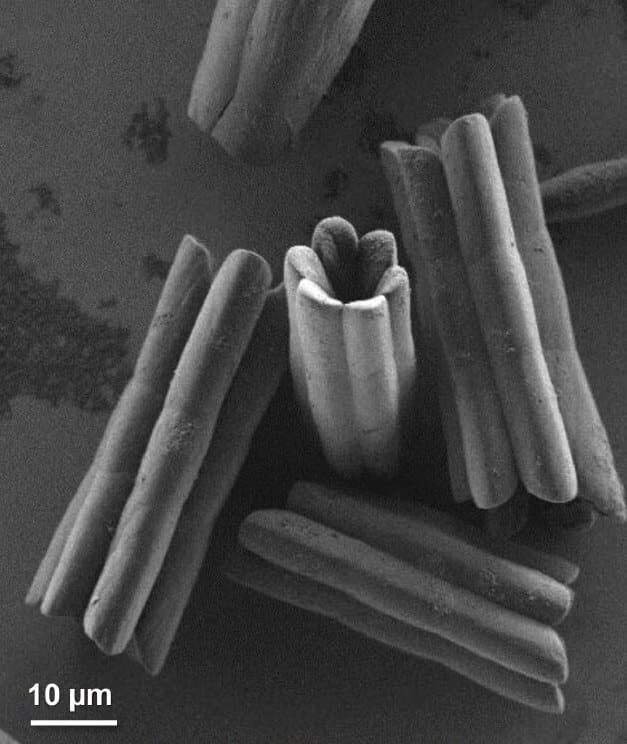From the creator of yo-yo crystals, now comes the next generation - hollow crystals
Cannibalism is not a desirable thing, to say the least, but as far as the world of crystals is concerned, it is possible that understanding the mechanism that causes these structures to "eat" themselves, holds the potential for developing a wide variety of applications - from storing green fuels to capturing carbon dioxide from the atmosphere. Recently, the scientists of the Weizmann Institute of Science encountered this phenomenon of "molecular cannibalism", when they created in the laboratory - by chance - hollow crystal.
The story of the crystal begins with a reaction between organic molecules and the metal salt nickel bromide. The scientists discovered that these materials, when they come into contact with each other, are able to crystallize into a six-sided structure whose diameter is tightened at the edges - a kind of crystalline "zucchini". Over time, the scientists witnessed surprising events that they describe as "cannibalistic": the inside of the structure was "eaten", and the materials that filled the core of the crystal broke away, leaving it hollow. At the same time, additional layers were formed on its outer part. This process gradually led to the change of the external shape of the crystal from a smooth shell to six connected "rods". Despite its peculiar shape, the scientists were surprised to discover that these structures are single crystals, that is, arranged uniformly and cyclically at the atomic level.
Prof. Milko van der Baum And the members of his group - from the Department of Molecular Chemistry and Materials Science - have been investigating for three years how these unique crystals crystallize, the like of which cannot be found in nature. "When they were first created," says Prof. van der Baum, "my first thought was: what have we actually created here? And the second thought: Can we reproduce the results?"

To follow the development of the events that led to the formation of the crystal, the scientists - led by postdoctoral researcher Dr. Maria Chiara Di-Gregorio and senior staff scientist Dr. Michal Lahav - used a variety of XNUMXD analysis methods - including the use of a scanning electron microscope (SEM) and imaging Micro-CT. These methods allowed the scientists to capture extremely detailed images of the crystal, thus confirming their findings.
""My first thought was: what have we actually created here? And the second thought: Can we reproduce the results?"
Crystals - whether formed naturally or in the laboratory - crystallize into different shapes and structures," says Dr. DiGregorio. "The structure and form dictate, in the end, their properties and their function. The hollow crystals we made belong to a class of materials known for being porous. Nevertheless, controlling the way they are created is a challenging task." The new crystal may contribute to the development of new applications - such as the storage of environmentally friendly fuels or the acceleration of chemical reactions. Prof. van der Baum and Dr. Lahav hypothesize that creating complex crystals in the laboratory and understanding the mechanism of their creation may help decipher the laws of nature."
The scientists in Prof. van der Baum's research group hypothesize that these crystals, and the yo-yo crystals they have already developed in a previous study, are the first of their kind - porous crystals with desirable properties, with a wide range of possible applications. In fact, they are already working on a third crystal - Egg-like and with a complex and rough shell - and plan to produce more buildings in the future.
The research students Kiang Wen and Marna Alsoso from Prof. van der Baum's group also participated in this study; Dr. Linda Shimon, Dr. Vlad Brumfeld and Dr. Lothar Houben from the Department of Infrastructure for Chemical Research at the Institute.
